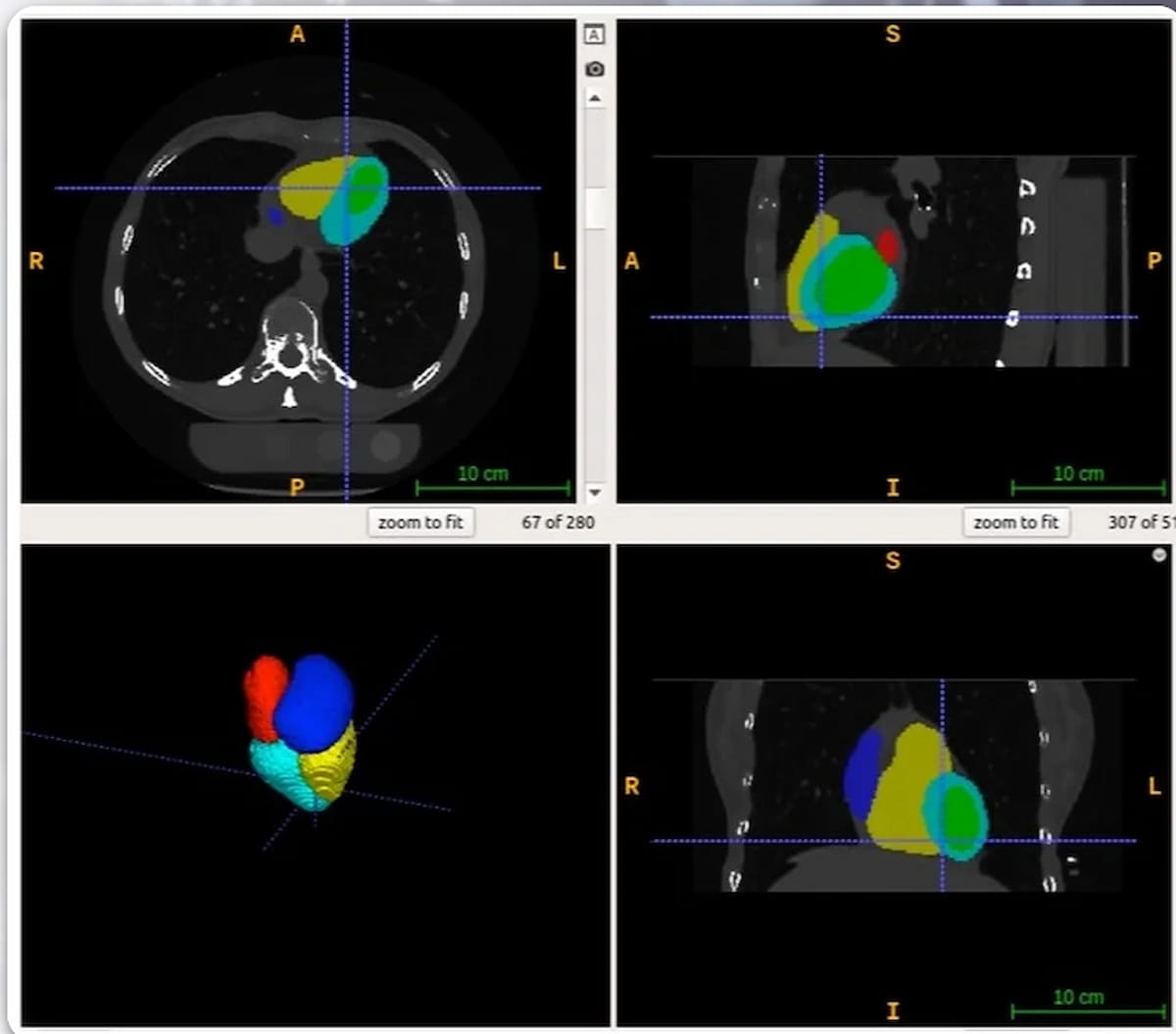FDA Clears CT-Based AI Software for Detecting Enlarged Heart Chambers
The AI-enabled AutoChamber software also garnered the FDA’s breakthrough device designation for opportunistic detection of enlarged heart chambers on non-contrast CT scans.
The Food and Drug Administration (FDA) has granted its breakthrough device designation and 510(k) clearance for AutoChamber™, an artificial intelligence (AI)-enabled software for computed tomography (CT) that may facilitate early detection of enlarged heart chambers.
Leveraging deep learning-based AI, the AutoChamber software calculates the volume of cardiac chambers and left ventricular wall mass in 15 to 20 seconds, according to HeartLung Technologies, the manufacturer of AutoChamber.
The newly FDA-cleared AutoChamber software leverages deep learning-based AI to calculate the volume of cardiac chambers and left ventricular wall mass in 15 to 20 seconds, according to HeartLung Technologies, the developer of the software. (Images courtesy of HeartLung Technologies.)

The company said AutoChamber, which can be utilized for heart CT and coronary CT angiography (CCTA) scans as well as chest CT for lung cancer screening, may help identify patients who have higher risks for atrial fibrillation, stroke, and heart failure.
“I feel strongly about the opportunity AutoChamber may have to evaluate cardiovascular risk for the millions of persons getting chest CT scans worldwide, in particular for lung cancer screening and other non-cardiac reasons,” noted Nathan Wong, M.D., a professor of director of the Heart Disease Prevention Program within the Division of Cardiology at the University of California, Irvine in Irvine, Calif. “The potential is for identifying those at increased risk who could benefit from earlier intervention to improve outcomes.”
Clarius Mobile Health Unveils Anterior Knee Feature for Handheld Ultrasound
April 23rd 2025The T-Mode Anterior Knee feature reportedly offers a combination of automated segmentation and real-time conversion of grayscale ultrasound images into color-coded visuals that bolster understanding for novice ultrasound users.
What is the Best Use of AI in CT Lung Cancer Screening?
April 18th 2025In comparison to radiologist assessment, the use of AI to pre-screen patients with low-dose CT lung cancer screening provided a 12 percent reduction in mean interpretation time with a slight increase in specificity and a slight decrease in the recall rate, according to new research.
Meta-Analysis Shows Merits of AI with CTA Detection of Coronary Artery Stenosis and Calcified Plaque
April 16th 2025Artificial intelligence demonstrated higher AUC, sensitivity, and specificity than radiologists for detecting coronary artery stenosis > 50 percent on computed tomography angiography (CTA), according to a new 17-study meta-analysis.